Induction heating of steel billets: case study
Induction is becoming an increasingly popular choice for heating steel billets prior to forging, due to its ability to create high heat intensity quickly and within a billet, which leads to low process-cycle time (high productivity) with repeatable high-quality, occupying minimal space on the shop floor.
It is more energy-efficient and inherently more environmentally friendly than most other heat sources for steel billets. Manufacturers aim to achieve high productivity, low cycle times, and repeatable quality—all while minimizing energy consumption and environmental impact.
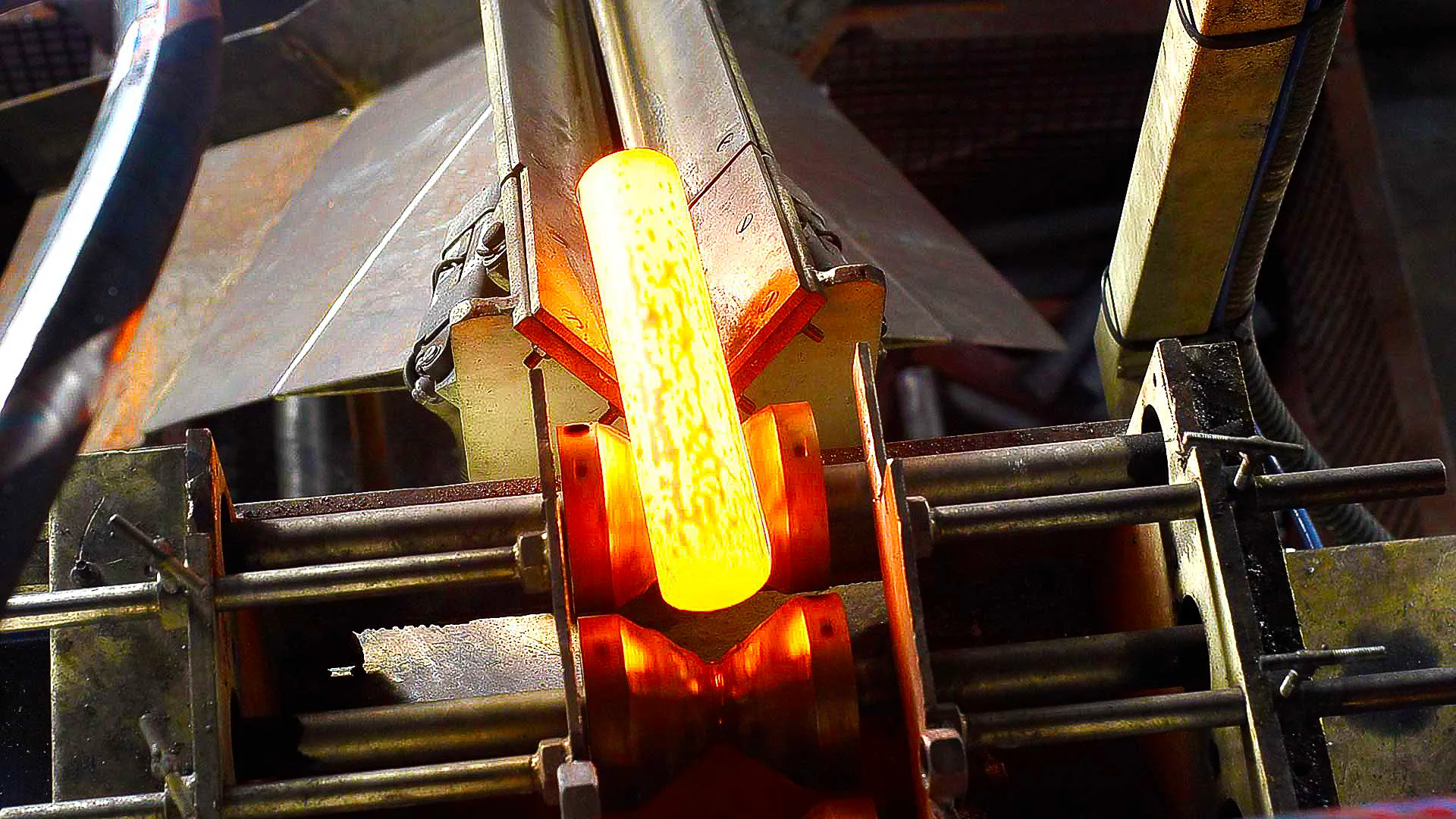
In this case study, we’d like to demonstrate a simulation example on how to optimize a progressive induction heating system for a steel billet using CENOS, a 3D simulation software, which is focused specifically on induction heating and uses open source components and algorithms, making it affordable for small and medium companies.
What is the challenge?
CENOS simulation software is capable of simulating various types of induction heating for forging. It is possible to simulate both static heating and progressive heating where the billet is moved through the coil with constant velocity.
The coil design is also of no limitations – single coil and multi-coil are possible to simulate. Besides the coil, it is also possible to simulate any material and frequency. Common challenges include subsurface overheating, inefficient energy use, and inconsistent results. Engineers must navigate complex parameters like coil design, frequency selection, and material properties, making manual adjustments time-consuming and costly.
The challenge grows when comparing multiple system designs. For example, how do you determine whether a two-stage or three-stage heating system offers better performance without costly trial-and-error? This is where using simulation software offers a solution.
What is the solution?
CENOS, a 3D simulation software, is tailored to solve induction heating challenges by empowering engineers with powerful computational tools. Designed for ease of use—even for beginners—CENOS simplifies the complex physics of induction heating into a streamlined three-step process:
The simulation process consists of three steps:
- Choose the workpiece geometry (from built-in templates or create your own CAD file).
- Define induction heating parameters (frequency, voltage, time, etc.).
- Run 2D or 3D simulation of your choice.
In the end, results like temperature and magnetic field are displayed in 3D renderings, plots, and more.
Apparent power, induced heat, and inductance are logged into an Excel file.
3D Simulation example – comparison of two heating systems
Here, the progressive heating of the billet is simulated, with two systems under consideration – two-stage and three-stage systems.
- The target for the simulation was to reach 1200 ℃ ± 50 ℃.
To check both systems, the user had to create a setup for both of them, set physical parameters (material properties, frequency, current, etc.) and start the simulation.
After the simulation is done, the user has access to different output variables:
- Temperature distribution
- Current density and Joule heat distribution
- Magnetic field lines
- Total, reactive and apparent power
- Inductance of the coil
- Coil current, voltage
- etc.
In our example of billet heating is possible to compare both cases and the output.
|
|
Two stage system |
Three stage system |
|---|---|---|
|
Power, kW |
340 |
570 |
|
Production rate, kg/h |
830 |
1560 |
|
Power per kg, kWh/kg |
0.41 |
0.37 |
It is visible how a three stage system can decrease the power consumption and increase the production rate for this specific case.
It is also possible to plot the distribution of temperature, Joule heat, magnetic field etc. A resulting temperature distribution in the billet across the radius is shown in Figure 1. As can be seen, better temperature homogeneity is obtained in the three stage system.
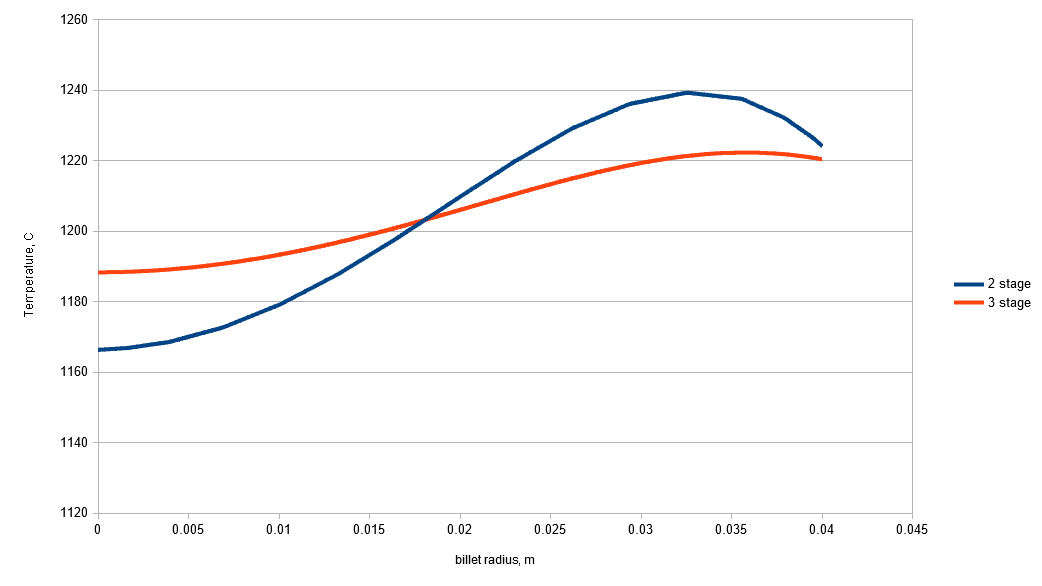
Figure 1. Temperature distribution along the billet radius at the outlet of the heating system
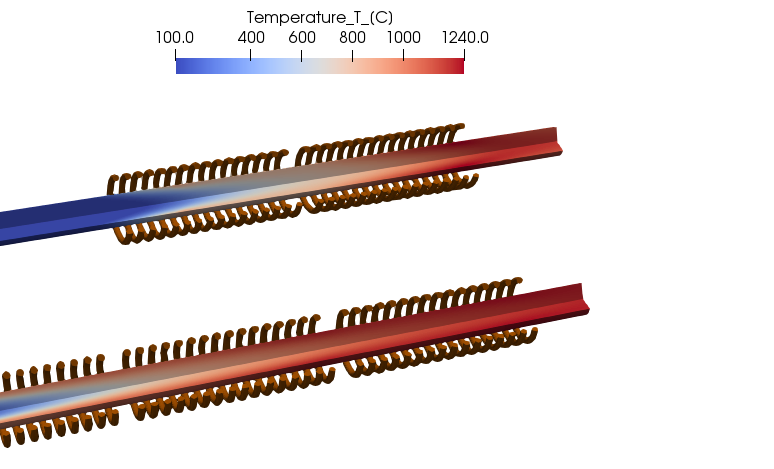
Figure 2. Temperature distribution in the long billet during scanning (progressive) induction heating.
Figure 2 shows how different systems lead to different temperature distribution. In two stage system, temperature required for forging is reached with shorter coils, thus also with smaller scanning speed. This leads to worse temperature uniformity and smaller production rates.
On the other hand, three stage heater gradually increases the temperature of the billet and the resulting temperature difference between core and surface is smaller.
CENOS users are free to change all the input parameters and assemble the system of any number of stages required for their process.
In case if the same system has to be used for scanning of shorter billets where end effects play a more significant role, it is possible to set up a simulation with moving billet. An example of temperature dynamics in such simulation are shown in GIF images below:
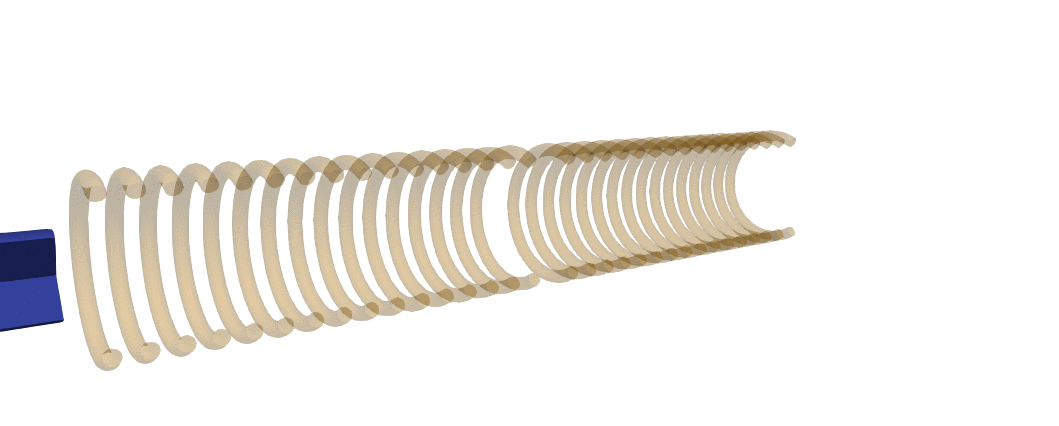
Two stage system
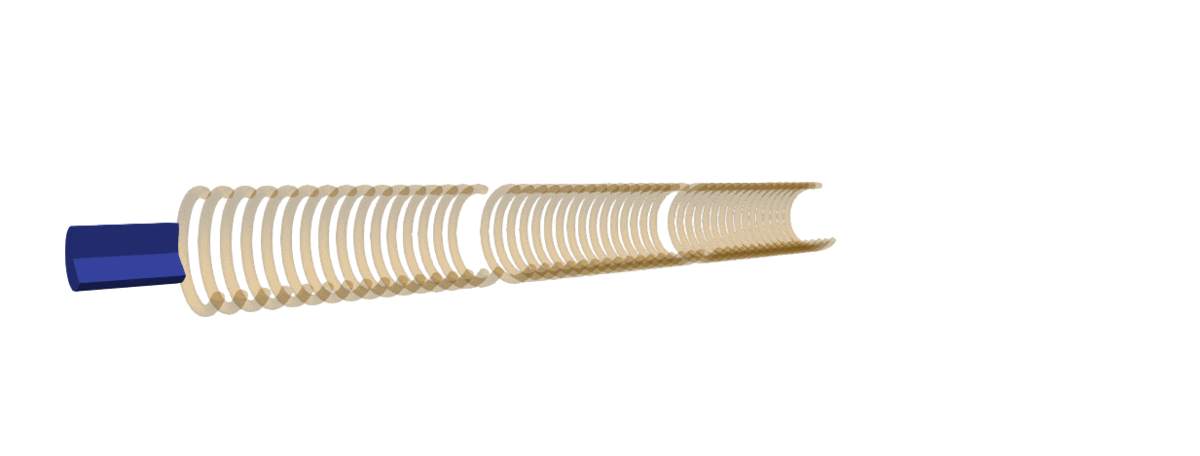
Three stage system
What is the result?
As demonstrated in the simulation example it is possible to compare two different systems and get results that make decisions easier thus saving valuable company resources. Simulation helps make better decisions for production set-up and planning.
The scope and variety of different simulations is unlimited, all depends on what problem user wants to solve:
- Heating system design to optimize induction heating performance, improve product quality, and avoid unpleasant surprises related to subsurface overheating
- The selection of power, frequency, and coil length in induction billet heating applications
- The selection of right forging temperatures for plain carbon and alloy steels to avoid possible damage by incipient melting or overheating.
This use case shows the potential of simulation software in improving the manufacturing industry. With tools like CENOS, engineers are equipped to overcome the complexities of induction heating, paving the way for innovation.


